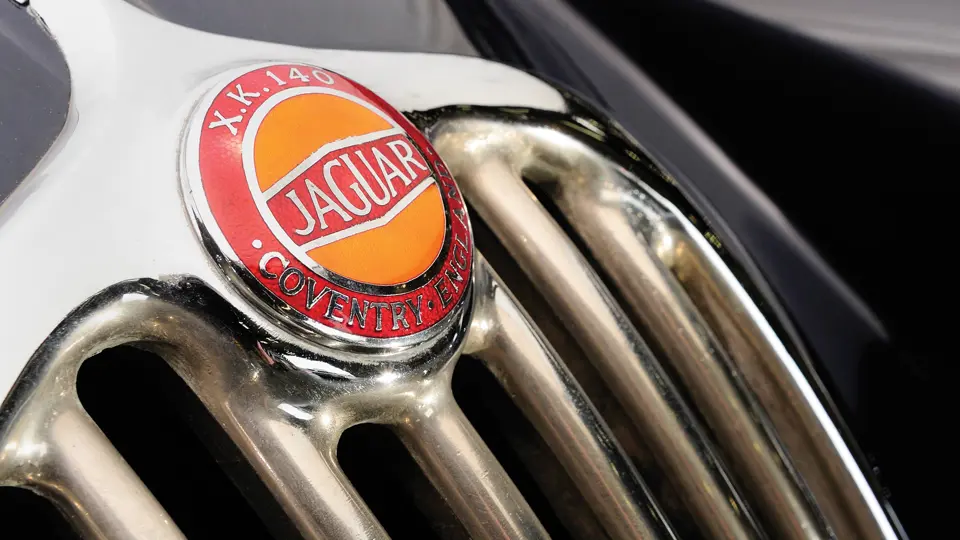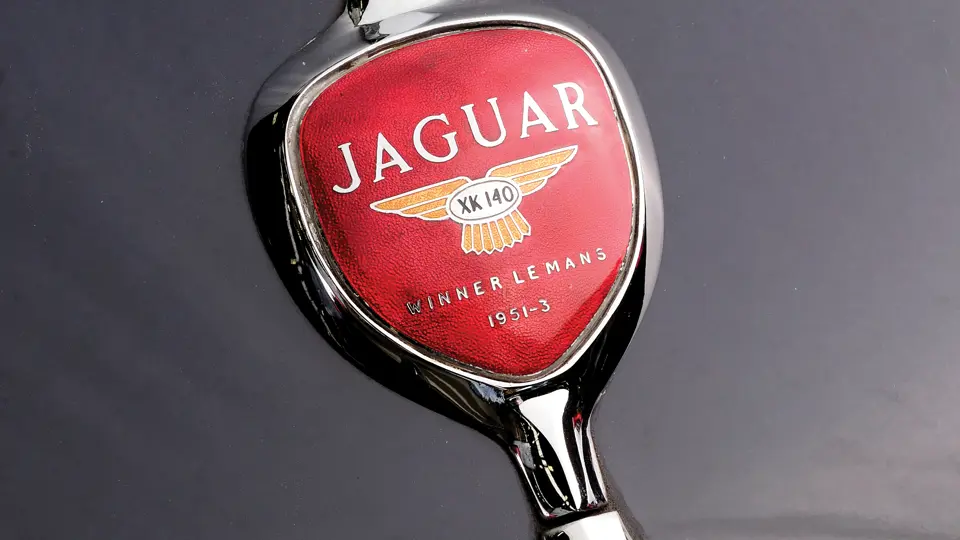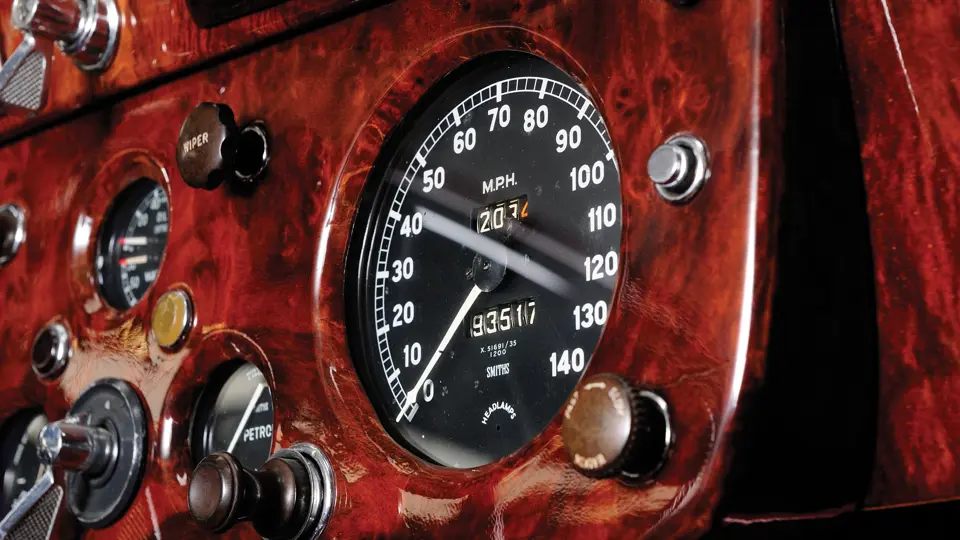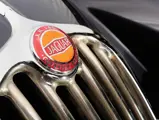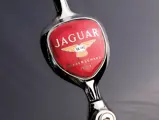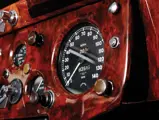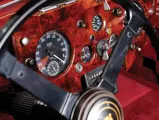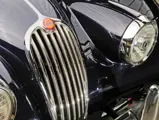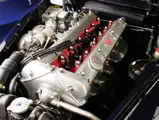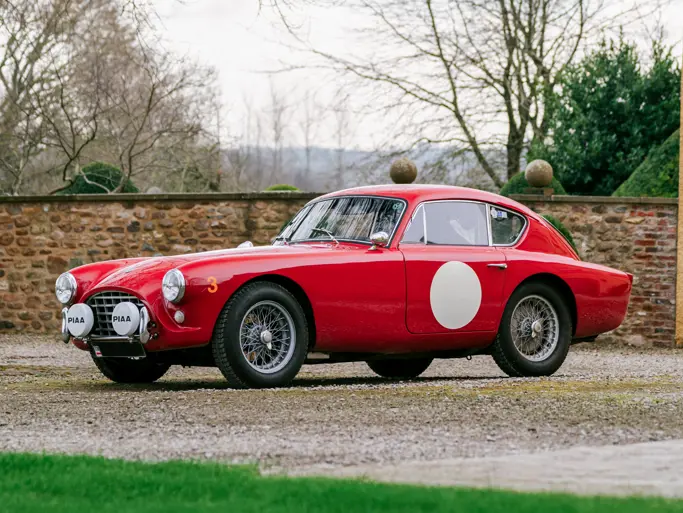210 bhp at 5,750 rpm, 3,442 cc dual overhead-camshaft inline straight-six engine, two SU carburettors, four-speed synchromesh gearbox, independent front suspension with transverse wishbones and torsion bars controlled by telescopic dampers, semi-elliptic spring rear suspension controlled by telescopic dampers, and four-wheel hydraulic brakes. Wheelbase: 2,591 mm
Jaguar’s sensational XK120 was launched in October 1948 with 160 brake horsepower, which was produced from its 3.4-litre, twin overhead-cam, six-cylinder engine. The car had a top speed of 120 mph and dominated its class in motorsport. The XK120 was a massive success, as the first production example was sold to Clark Gable and the gorgeous design was adored by almost everyone who saw it. At £1,273 in open roadster form, it represented incredible value for the money.
In October 1954, the 120’s replacement was launched and given the name XK140. Numerous changes were made to make the car more liveable and attractive in the American market. The XK140 offered more interior space, a result of the engine being moved forward three inches, more precise rack-and-pinion steering was fitted, and the fixed head coupé iteration offered 2+2 seating. The standard engine produced 190 brake horsepower, whilst the special equipment (SE) version, with the C-Type head, produced 210 brake horsepower and had a top speed in excess of 135 mph.
Whilst the XK120 was lauded the world over and tremendously successful in motor racing, Jaguar decided not to change what worked when introducing the XK140, and so they offered the same three body styles as its predecessor, the drophead, the roadster, and the fixed head coupé. Not only was the XK140 faster and more powerful, but, thanks to better suspension and a remounted engine, handling was also superior.
According to its JDHT Certificate, the 1955 Jaguar XK140 Fixed Head Coupé presented here is showing 93,523 miles on its odometer. Originally finished in Birch Grey and exported to the United States, the car is finished today in a stunning shade of dark blue with red leather hide, and it is in tremendous condition. Whilst there is no racing or rallying documentation provided with the car, it is clearly set up with competition in mind. The car is fitted with Schroth seatbelts, a fire extinguisher in the passenger footwell, and a battery isolator key. Equipped as such, this car is more than ready to be enjoyed in historic events around the globe.


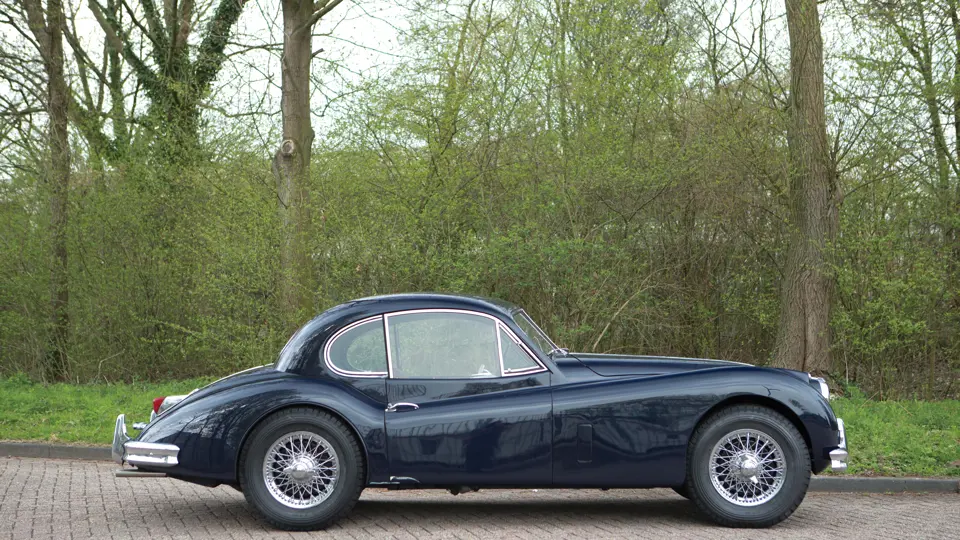

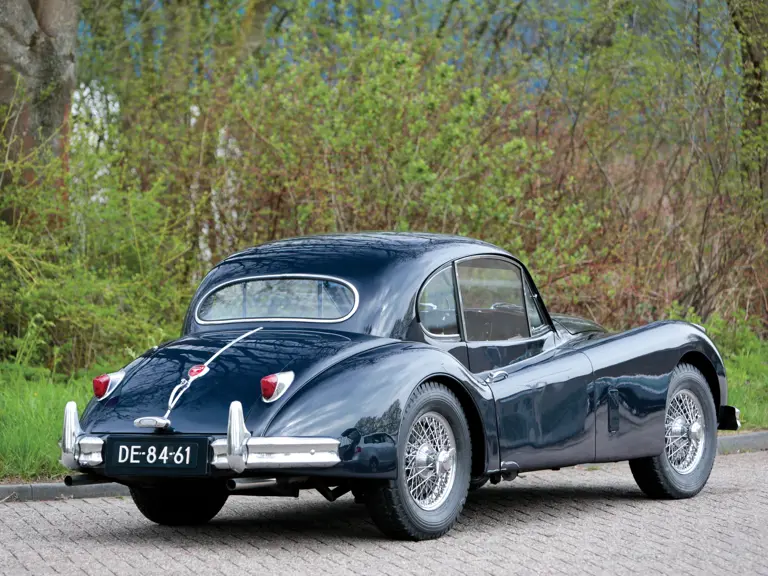
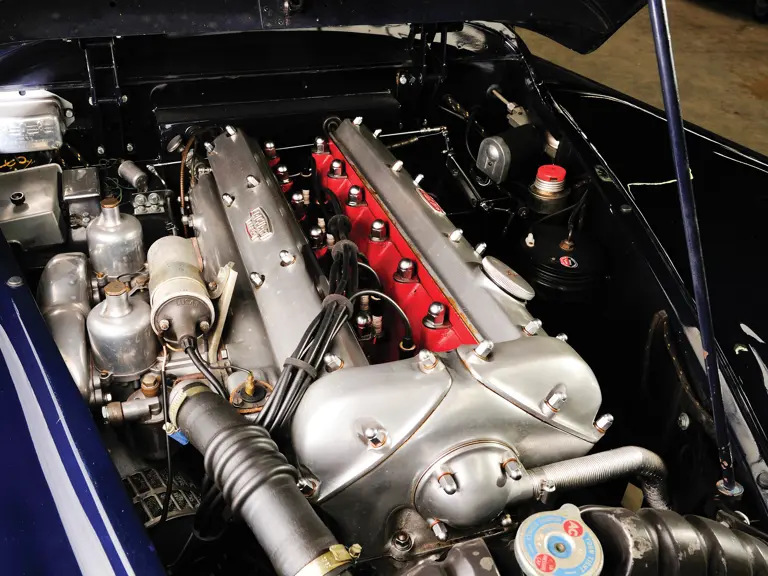
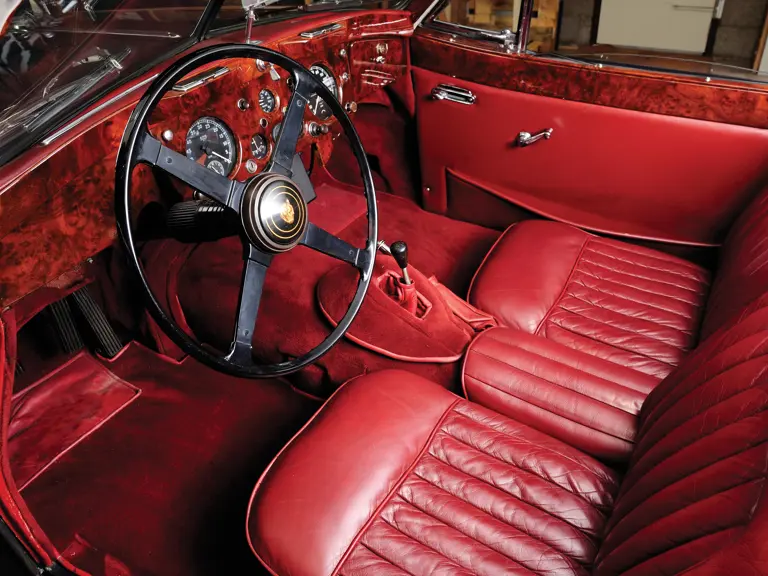

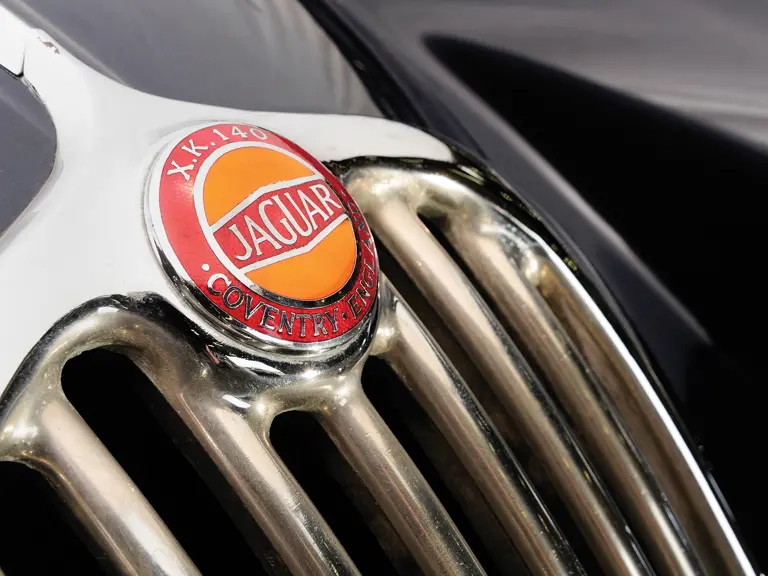
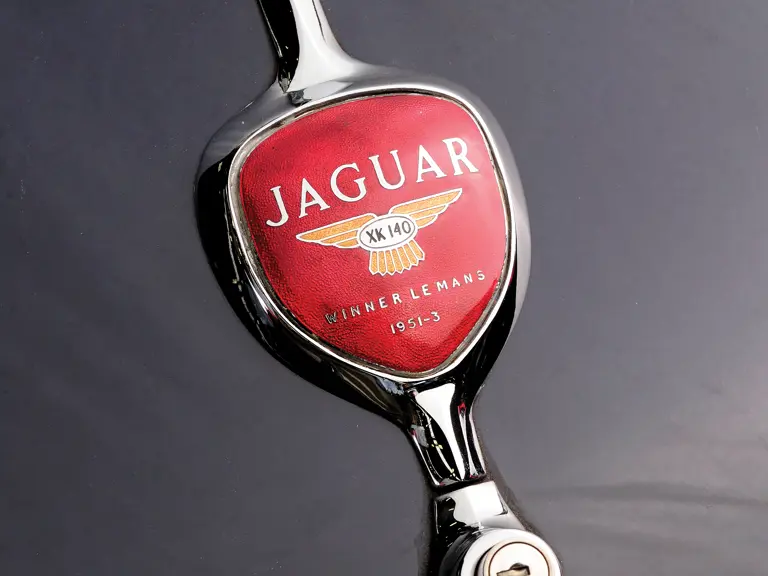
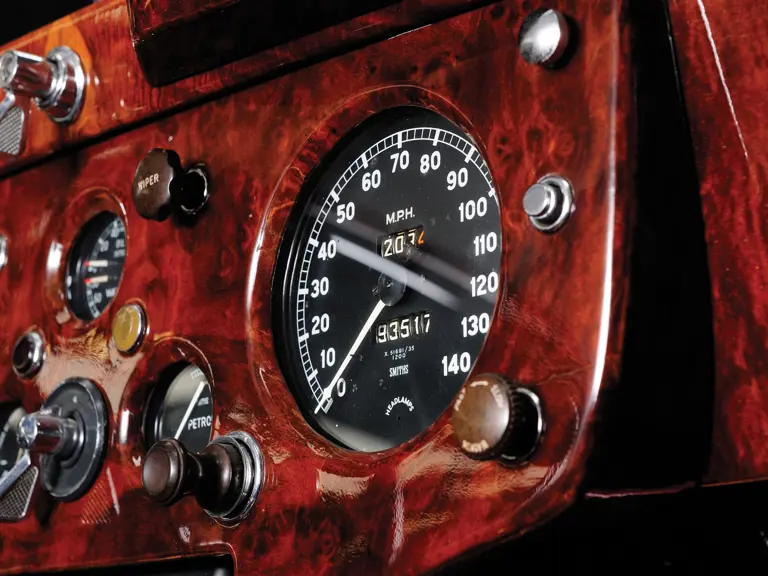
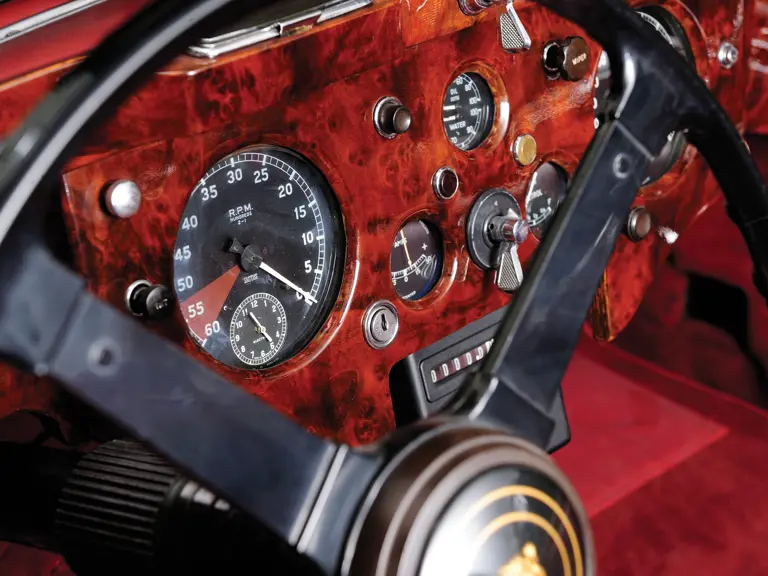
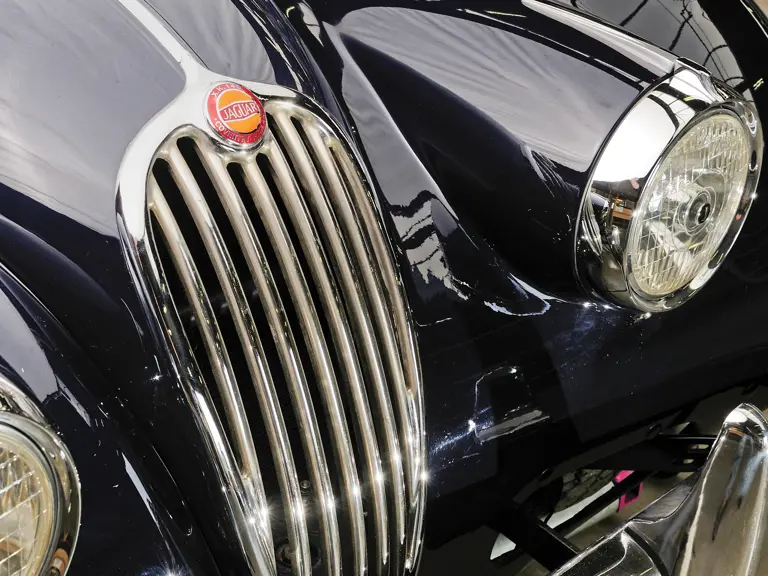
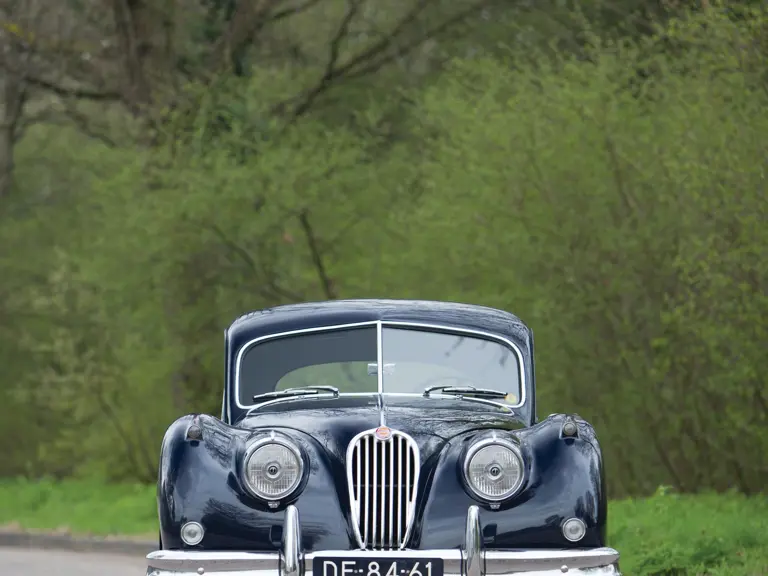
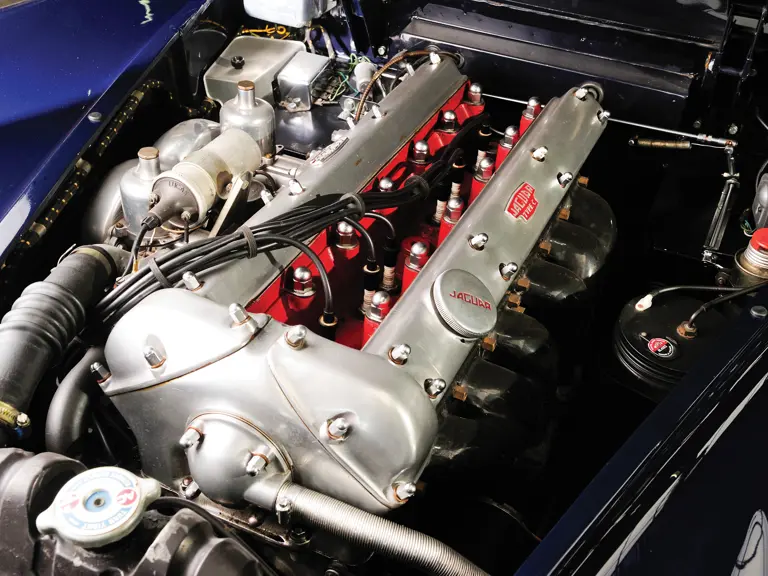
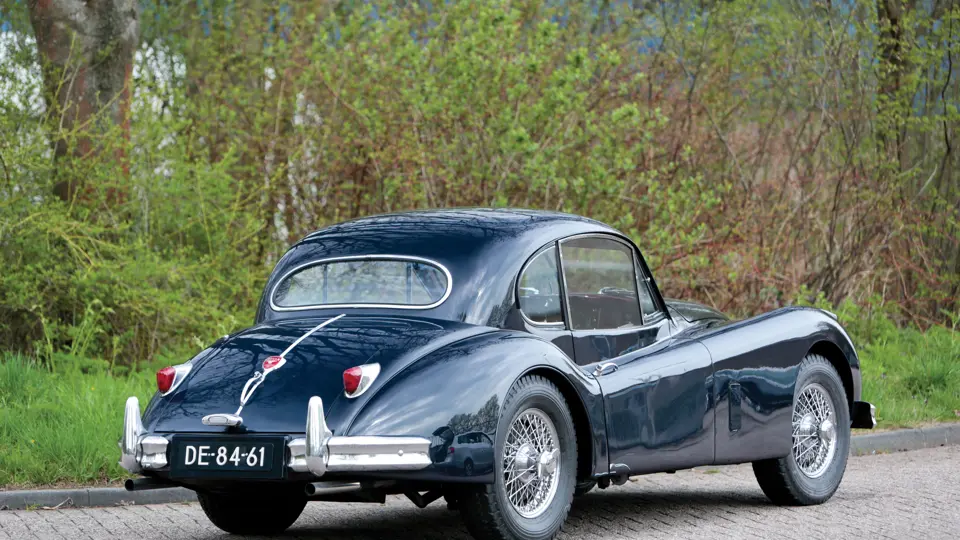
 | London, United Kingdom
| London, United Kingdom
